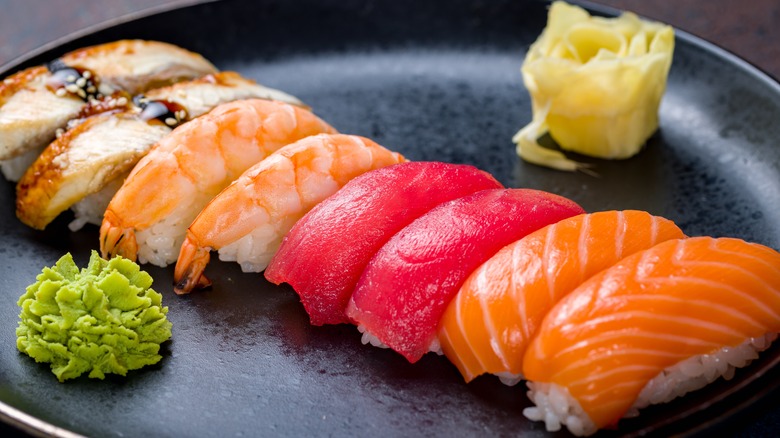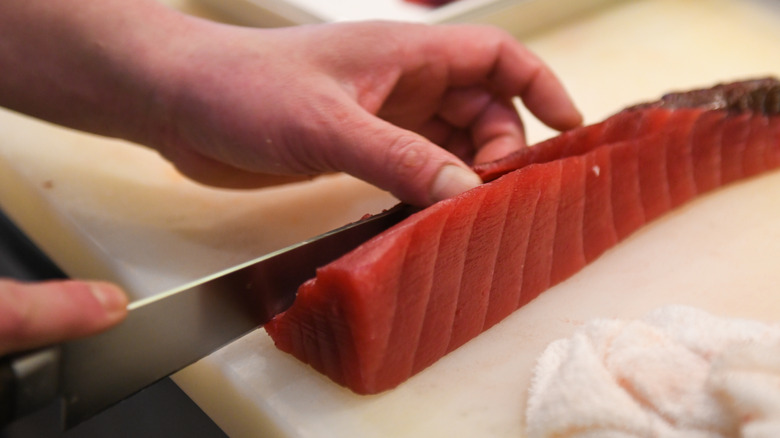How To Tell Sushi Has Gone Bad
Sushi is one of America's most-loved and most-controversial dining options. Jonas House in Food and Foodways Journal that sushi was brought to the U.S. by Japanese immigrants and first started achieving major popularity in the 1960s. But even today, when folks learn that sushi is made up of raw fish, there is often a moment of confusion. We are taught to never consume raw poultry, meat, or dairy, so what sets cuts of raw fish apart?
Sushi-grade seafood is made from fish and shellfish that has been frozen for at least 15 hours, says Windsor-Essex County Health Unit. This eliminates some health risks, like any parasites that may have been living in the fish, but that doesn't mean it can't go bad or cause sickness. So whether you're checking out your leftovers from the sushi bar or wanting to try your hand at the divine art of making your own sushi, you need to know what to look (or smell) out for to know if your sushi has gone bad.
Sniff it out
Smell, or the olfactory system, is the most heightened sense modern humans have. And when it comes to determining if the sushi in your fridge has gone off, it's the best tool in your arsenal. But the general advice that if it smells "fishy," toss it, isn't all that helpful. It can be hard to know what exactly is meant — after all, it is fish, right? Fish should actually only smell very lightly of fish — so if it's especially pungent or strikes your nose straight off, it's not safe to eat.
Additionally, if the fish smells of ammonia (per Catch and Fillet) sour, or funky (think: decomposed food in the trash you forgot to take out last night), do not prepare or consume it. The smell of safe-to-eat fish is very lightly salty and fishy — think of ocean breeze. But there are other ways to determine if your sushi has gone bad.
Sushi red flags
Your other senses can help you out, even if the smell of the fish isn't a dead giveaway. You can tell a lot about the quality and safety of fish based on its color and texture. You're probably used to seeing super-saturated photos of sushi — bright pink tuna and tangerine-hued salmon. And while your at-home sushi fish or leftovers won't be quite as bright, you should definitely get some of those bright pops. Readers Digest says that fish that has taken on a blue or grey tint should be discarded. If your cut of fish or shellfish is considerably duller than when you first bought it, it's best to skip the sushi dinner.
Additionally, the texture of the sushi meat is a great indicator of its quality. Just like that bag of salad you swore you'd eat this week, sushi gets slimy if it's not consumed in a timely manner. This is a result of decay that causes proteins and bonds to break down, releasing water. This moist coating is a magnet for bacteria, so don't eat the sushi if it's gotten a slimy coating. Mental Floss also cautions that you should look for firm cuts of fish. When you push your finger against the fillet with light pressure, it should only have minimal give, and be able to bounce back after.


